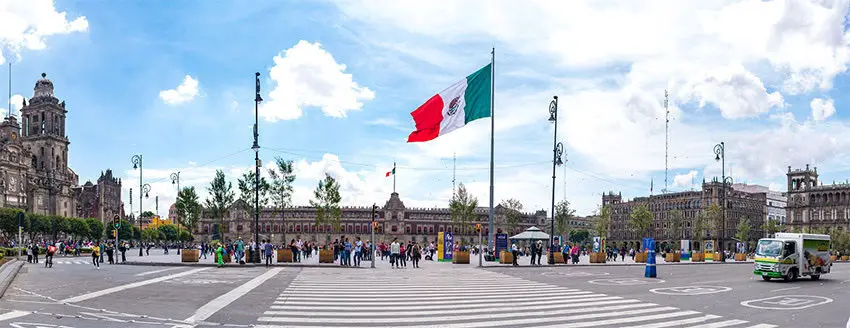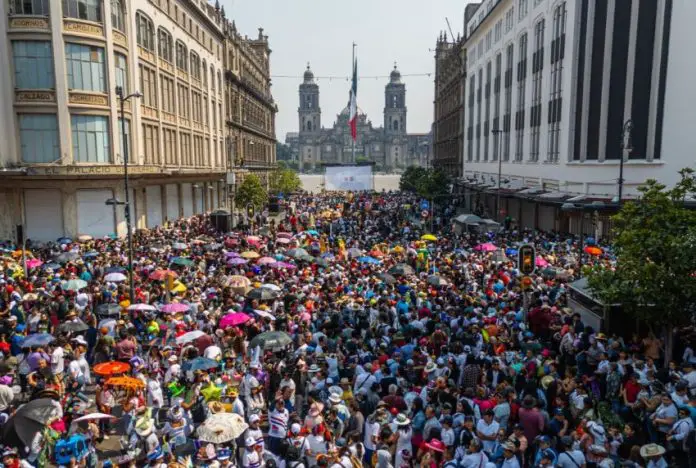On Sunday, over 19,000 people gathered at the Zócalo public square in Mexico City to celebrate its transformation into a pedestrian-only plaza. The four perimeter roads around the square and sections of three roads that give access to it — 20 de Noviembre, Pino Suárez and 16 de Septiembre — are now all closed to vehicles.
Accompanied by various city officials, Mexico City Mayor Martí Batres cut the inaugural ribbon at around 10:45 a.m.
“Today, we reaffirm the Zócalo as the public space, and the public space is the people’s space and is the space of equality,” Batres proclaimed.
The attendees walked around the new pedestrian zone, led by Batres, while enjoying live performances by more than 200 artists. The musical shows included two mariachi groups, three batucadas, a pre-Hispanic dance show and organ grinders, among others.
While some walked, others cycled or skated around the plaza.
During his speech, Batres thanked the employees of the city’s Ministry of Works and Services (SOBSE), for working to turn the Zócalo into a pedestrian-only space. Meanwhile, the minister of the SOBSE, Jesús Antonio Esteva Medina, recalled that the decision to make the Zócalo a pedestrian-only space was the result of a public survey.

“It is a privilege, and it has been a great responsibility for the Ministry of Works, to have intervened in the second-largest square in the world,” Esteva said during his inaugural speech.
The renovation work, which commenced in February, included painting 39 posts, installing 31 planters, replacing 562 flagstones, removing 97 traffic lights, removing 14,163 square meters pavement, laying 5,713 square meters of asphalt, and finally, installing 13,163 cubic meters of hydraulic cement.
When the project was announced in January, Batres said that it would permit unobstructed pedestrian access to, and enjoyment of, the plaza. It would also encourage sustainable mobility around the city center, and “rescue, dignify and revitalize the use of public space.”
Finally, an official from the Ministry of Urban Development and Housing, Patricia Ramírez Kuri, emphasized the importance of revitalizing public spaces for the progress of communities, for cultural appreciation and for the advocacy for human rights.
“A public space is the place where we’re educated as citizens, but also where we fight for our rights,” she said.
Newspaper Excélsior reported that in addition to Mexicans, “many foreigners” attended the inaugural event.
With reports from Forbes México and Excélsior
